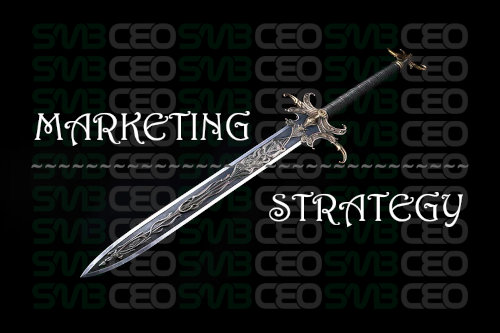Marketing has long been heralded as the lifeblood of business, the engine that drives growth, brand recognition, and customer loyalty. It’s the discipline that transforms obscure startups into household names and propels industry giants to even greater heights. But for all its power and potential, marketing can also be a double-edged sword.

When wielded carelessly or aggressively, it can wreak havoc on entire industries, triggering price wars, promoting unhealthy competition, and fostering a culture of dishonesty and short-term thinking.
In this article, we’ll explore the darker side of marketing—the ways in which well-intentioned strategies can spiral out of control and end up harming the very industries they aim to elevate. More importantly, we’ll discuss how businesses can navigate these treacherous waters, adopting practices that promote sustainability and long-term growth without sacrificing competitive edge.
The Unseen Consequences of Aggressive Marketing
1. The Price War Spiral
Price wars are perhaps the most visible and immediate consequence of aggressive marketing. In an effort to undercut competitors and win over price-sensitive customers, companies slash prices, sometimes to unsustainable levels. While this might drive short-term sales, the long-term effects can be devastating.
As prices plummet, profit margins shrink, forcing businesses to cut costs elsewhere—often in areas like product quality, customer service, and employee wages. Over time, this erodes brand value and customer loyalty, creating a vicious cycle where the only way to stay competitive is to cut prices even further.
Example: The Retail Apocalypse The retail industry has been one of the most notable victims of the price war spiral. In a bid to compete with e-commerce giants like Amazon, brick-and-mortar retailers have slashed prices to the bone, leading to a race to the bottom that has left many businesses struggling to survive. The result? Store closures, mass layoffs, and a retail landscape that looks dramatically different from a decade ago.
2. The Race to the Bottom in Quality
As companies focus on lowering prices to gain a competitive edge, quality often becomes the first casualty. Marketing departments may prioritize flashy advertising campaigns over the actual value of the product or service, leading to a disconnect between what is promised and what is delivered. This creates a ripple effect across the industry, as competitors are forced to match these tactics to stay relevant.
Over time, this can lead to a degradation of industry standards, where the focus shifts from innovation and quality to who can deliver the cheapest product the fastest. Consumers, in turn, become conditioned to expect less for less, lowering their standards and diminishing the overall value of the market.
Example: The Fast Fashion Dilemma Fast fashion is a prime example of how aggressive marketing can lead to a race to the bottom in quality. Brands like H&M and Zara have built empires on the promise of trendy clothing at rock-bottom prices, but this has come at the cost of product quality and ethical manufacturing practices. As more companies have adopted this model, the fashion industry as a whole has seen a decline in the value placed on craftsmanship and sustainability.
3. Unethical Marketing Tactics
When the competition gets fierce, some companies may resort to unethical marketing tactics to gain an edge. These can include false advertising, slander against competitors, manipulation of customer data, and other forms of dishonesty. While these tactics may yield short-term gains, they often backfire, leading to legal repercussions, damaged reputations, and a loss of consumer trust.
Unethical marketing can also set a dangerous precedent within an industry, normalizing practices that harm consumers and competitors alike. This can lead to a toxic environment where the ends justify the means, and the focus shifts from creating value to outmaneuvering the competition at any cost.
Example: The Volkswagen Emissions Scandal The Volkswagen emissions scandal is a stark reminder of how unethical marketing can backfire spectacularly. By marketing its diesel vehicles as environmentally friendly while secretly installing software to cheat emissions tests, Volkswagen not only violated consumer trust but also caused significant harm to the automotive industry’s reputation as a whole.

How to Deal with the Downside of Marketing
1. Prioritize Ethical Marketing
The first step in mitigating the negative impact of marketing is to prioritize ethics over short-term gains. This means being transparent in your advertising, respecting customer privacy, and avoiding tactics that could harm competitors or mislead consumers. By building a reputation for honesty and integrity, you can differentiate your brand in a crowded marketplace and foster long-term loyalty.
Actionable Tip: Develop a code of ethics for your marketing team that outlines acceptable practices and provides guidelines for making ethical decisions. Regularly review and update this code to reflect changes in industry standards and consumer expectations.
2. Focus on Value, Not Price
Instead of competing on price, focus on creating value for your customers. This can involve investing in product quality, customer service, and brand experiences that justify a premium price. By shifting the conversation from “cheaper” to “better,” you can attract customers who are willing to pay more for a product or service that truly meets their needs.
Actionable Tip: Conduct regular customer surveys to understand what your audience values most and use this feedback to inform your product development and marketing strategies. Highlight these unique value propositions in your marketing campaigns.
3. Innovate, Don’t Imitate
In a competitive market, it can be tempting to copy the strategies of your most successful competitors. However, this often leads to a homogenization of the industry, where every brand looks and sounds the same. Instead of following the crowd, focus on innovating—whether through new products, marketing channels, or customer engagement strategies.
Actionable Tip: Set aside time and resources for creative brainstorming sessions with your marketing team. Encourage out-of-the-box thinking and experimentation, and be willing to take calculated risks to stand out from the competition.
4. Build Long-Term Relationships
Short-term marketing tactics may deliver quick wins, but they rarely lead to lasting success. Instead, focus on building long-term relationships with your customers through loyalty programs, personalized experiences, and consistent communication. By nurturing these relationships, you can create a loyal customer base that will support your business through market fluctuations and competitive pressures.
Actionable Tip: Invest in a robust CRM system that allows you to track customer interactions, preferences, and feedback. Use this data to create targeted marketing campaigns that address the specific needs and interests of your most valuable customers.
Conclusion: Reclaiming the Positive Power of Marketing
Marketing doesn’t have to be a force for destruction. By being mindful of its potential pitfalls and adopting strategies that prioritize ethics, innovation, and long-term value, businesses can harness the power of marketing to build stronger, more sustainable industries. The key is to remember that marketing is not just about winning the next sale—it’s about creating lasting value for customers, employees, and the broader market.
As industries continue to evolve, the companies that succeed will be those that use marketing not as a weapon, but as a tool for positive change. By staying true to your brand values and focusing on creating real value for your customers, you can help ensure that your industry thrives—not in spite of marketing, but because of it.


